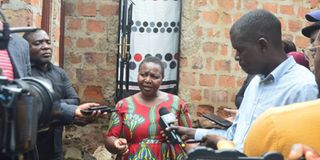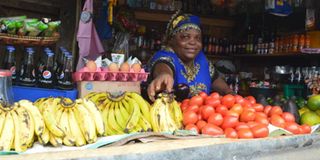Moshi. Kama unasubiri mabilioni ya fedha ndiyo yabadili hali yako ya maisha pengine unachelewa.
Wapo waliotumia Sh24,000 wanayoipata kila baada ya miezi miwili na sasa wameukacha ufukara.
Kwa mujibu wa baadhi ya wakazi wa Mkoa wa Kilimanjaro, maisha yao yamebebwa na uwezeshaji mdogo walioupata kupitia Mfuko wa Maendeleo ya Jamii (Tasaf), uliowawezesha kuwa na miradi ya kujiingizia kipato.
Wakazi hao ni wachache kati ya wanufaika wengi wa mpango wa Tasaf tangu mwaka 2014.
Caroline Minja anayeishi katika Kijiji cha Kariwachini, Kata ya Rau mkoani Kilimanjaro ni miongoni mwao, anasema kwa sasa anamiliki genge la bidhaa za mbogamboga na anafuga nguruwe.
“Kabla ya hapo nilianza kwa kuajiriwa kama mama lishe, sikuwa napata fedha za kutosha lakini siku moja walipita watu wa Tasaf,” amesema.
Mwanzo wake wa kuingia Tasaf, amesema ilikuwa mwaka 2015, baada ya kuhojiwa maswali kadhaa na kuonekana amekidhi vigezo aliandikishwa na kuanza kunufaika na mpango huo.
Kwa mara ya kwanza, amesema alipewa Sh48,000, mara ya pili Sh36,000 na wakifanya kazi hulipwa Sh130,000, kisha alipewa Sh350,000 kwa awamu ya mwisho.
“Fedha hii nimechukua mifugo naendelea nayo, nimefungua genge na fedha hizi za Tasaf zimenisadia kwani nimejenga nyumba hii (anaonyesha nyumba ya vyumba viwili, ikiwa na umeme), awali nilikuwa naishi nyumba ya udongo,” amesema na kuongeza:
“Kwa kweli bila Tasaf sijui hali yangu ingekuwaje, kwa sababu sikuwa na kitu na mlo ulikuwa changamoto. Lakini kwa sasa napata mlo asubuhi chai, mchana na usiku na malengo yangu nifike mbali kibiashara.”
Shufaa Mfinanga mkazi wa Kata ya Kaloleni Mtaa wa Kalimani Moshi akiwa gengeni kwake.
Ngumu kuamini
Ni vigumu kuamini kama nyumba inayomilikiwa naye imetokana na kiasi hicho kidogo alichokuwa akidunduliza kutoka Tasaf, kwani imenakshiwa kwa rangi nzuri.
Fedha yake ya kwanza, amesema alianza kuiwekeza kwa kufuga kuku huku akiendelea na shughuli za ususi, baadaye alianza kufuga njiwa, taratibu maisha yake yalibadilika.
“Hii nyumba ambayo mnaiona nilikuwa najenga taratibu. Nikipata Tasaf nanunua mifuko ya saruji kidogo na tukawa tunajenga kidogo kidogo,” amesema.
Amesema njiwa hao wanauzwa kuanzia Sh200,000 hadi Sh300,000 wakiwa wawili.
“Bila Tasaf sijui kama ningekuwepo kwa sababu mtoto wangu aliachwa darasa la tano mpaka sasa yupo kidato cha nne. Nilikuwa na nyumba viwili vya kawaida mpaka sasa nia nyumba hii.
“Yaani nilikuwa nikipokea kama 40,000 nanunua saruji naweka, makaunta book ya watoto na hadi sasa unaniona nimefika hapa,” amesema.
Simulizi kama hiyo inatolewa pia na Elizabeth Shirima anayeishi Kiboriloni mkoani humo, anayesema aliingia Tasaf kwa kurithi nafasi ya mama yake mzazi, ambaye alifariki akiwa mnufaika.
Baada ya kifo cha mama yake, amesema alibaki na mdogo wake aliyekuwa mgonjwa wa moyo na alilazwa katika hospitali ya KCMC na baadaye alitakiwa kupelekwa Muhimbili.
“Katika huu mpango jina lilikuwa la mama na baada ya kufariki mwaka 2015 na wakati huo nikiwa na miaka 20. Alipofariki mama nikaingizwa mimi kwenye mpango.
“Nilipojifunza ufundi, mama akaninunulia cherehani ambayo sasa ni mbovu ila nilipoanza kushona nikanunua ya kwangu na kupitia Tasaf imeniwezesha kupata fedha za kujikimu mimi na fedha niliyopokea nilinunua vitenge,” amesema.

Valeria Teti mkazi wa Relini wilayani Moshi akizungumza na waandishi wa habari walioambatana na ujumbe wa Tasaf ambaye amefanikiwa kujenga nyumba kwa Sh56,000 ya Tasaf.
Kutoka kumiliki cherehani mbovu, amesema kwa sasa anamiliki nzima na amekuwa fundi maarufu katika eneo hilo na anawafundisha wengine, hivyo maisha yake yamebadilika.
Shufaa Mfinanga (56) ni mama wa watoto wanne na mkazi wa Kaloleni mkoani humo, anasema maisha yake kwa sasa yanaendeshwa na biashara ya genge analolimiliki.
“Hela ya kwanza Sh24,000 niliyokuwa nikipewa sikuitumia nikawa nanunua kitu kimoja kimoja hadi pale nilipopewa Sh350,000 ya ruzuku ya uzalishaji mali na sasa nimesimamisha biashara yangu,” amesema.
Ufugaji kuku, sungura, ng’ombe na bata ndiyo msingi wa maisha ya Federika Swai anayeishi katika mtaa wa Viwanda mkoani Kilimanjaro.
Kabla ya mifugo hiyo, maisha ya Federika hayakueleweka, kwani hata uhakika wa mlo mmoja ilikuwa changamoto.
Kwa mujibu wa Fererika, alikuwa akiomba nafasi kwa majirani kwa ajili ya wanawe kulala, lakini sasa yupo kwenye ujenzi wa nyumba yake.
Valeria Teti, anayeishi Relini, mkoani Kilimanjaro, alianza kwa Sh56,000 na sasa anamiliki nyumba yake.
Kauli ya Tasaf
Mratibu wa Tasaf, Halmashauri ya Manispaa ya Moshi, Denis Robert anasema mpango wa kuzinusuru kaya masikini unatekelezwa tangu 2014 ili kuwatoa watu kwenye umasikini uliokithiri.
Awamu ya kwanza ya kunusuru kaya masikini ilipokamilika mwaka 2019/20 Serikali ikaleta kipindi cha pili ambacho tunacho hadi sasa.
“Mpango ukaongeza miradi ya ajira za muda, walengwa wakapewa vifaa, miradi ya matofali madogo, miche ya miti, kukarabati barabara hivyo wamepata na ujuzi,”ameeleza.
Robert anaongeza walengwa wamenufaika kupitia mipango ya biashara na ikafanyiwa tathmini wakapata ruzuku 697 zenye thamani ya Sh243 milioni.
“Hii ni kwa maana wakapata Sh350,000 kila mmoja kutekeleza miradi yao wakiwemo hao waliotembelewa,” amesema.
Awali, Akizungumza kwenye kikao na waandishi na wahariri kikichofanyika Julai 15, mwaka huu jijini Arusha, Mkurugenzi Mtendaji wa Tasaf, Shedrack Mziray alisema asilimia nane ya Watanzania wote wanakabiliwa na umasikini uliokithiri.
Lengo la Tasaf, amesema ni kuboresha maisha yao kwa kuwapa fedha, kisha kuwaingiza katika mfumo wa kujikwamua kiuchumi ikiwemo kuwapa fedha za ruzuku ya uzalishaji mali.
Source: mwananchi.co.tz














